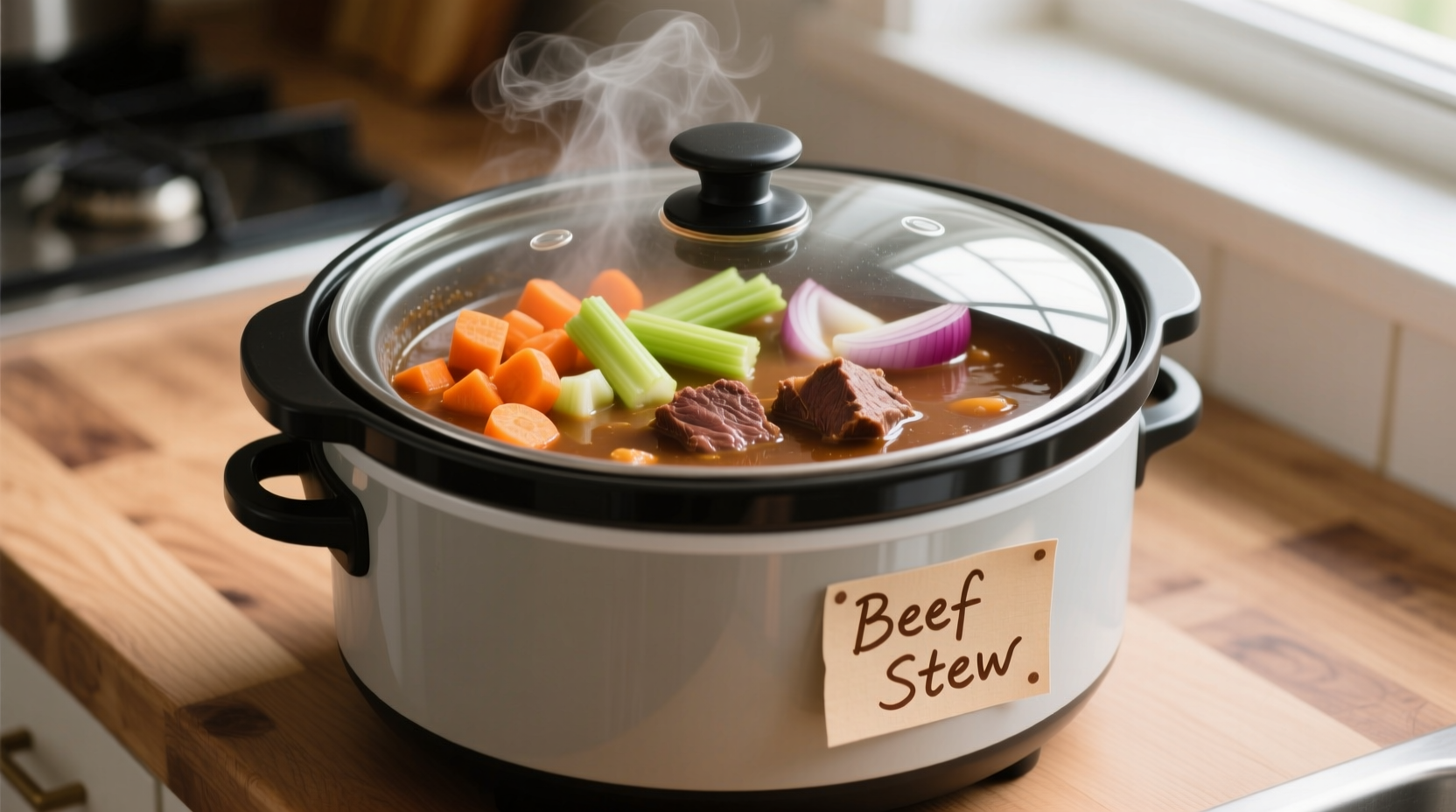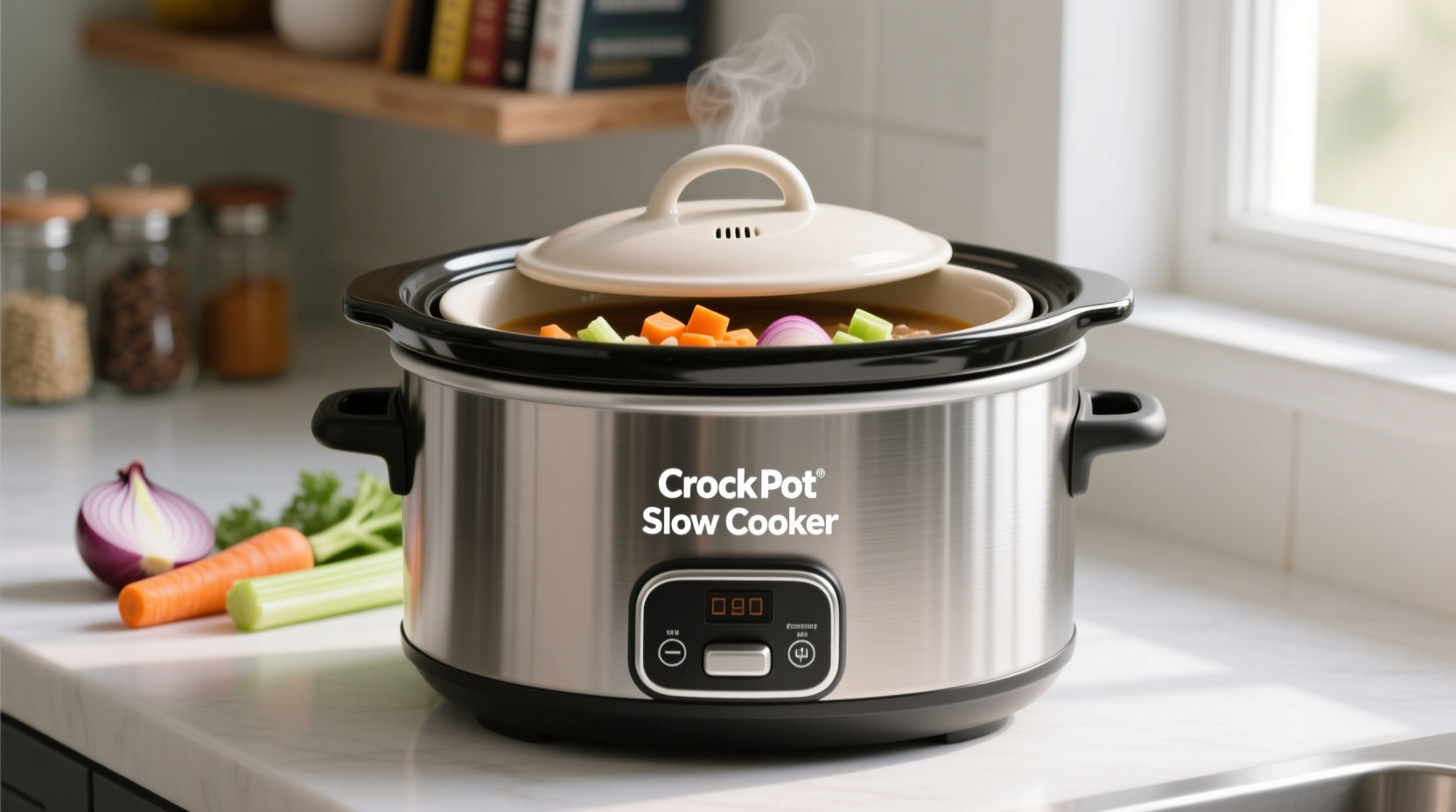Discover exactly what sets these kitchen staples apart, how they transform ingredients through gentle cooking, and why understanding this distinction matters for your cooking success. Whether you're meal prepping for the week or creating tender holiday roasts, this guide delivers practical insights you can use immediately.
Understanding the Core Distinction: Brand vs. Appliance
When shoppers ask what is a crock pot slow cooker, they're often confused by the interchangeable use of these terms. The Crock-Pot brand, introduced by Rival Company in 1971, became so dominant that its name became synonymous with slow cookers—much like Kleenex for tissues. However, today multiple manufacturers produce slow cookers with varying features.
Modern slow cookers typically include:
- Removable ceramic or stoneware cooking pot (the "crock")
- Heating element in the base
- Temperature settings (Low, High, Warm)
- Timer functions on newer models
How Slow Cooking Transforms Food Chemistry
Unlike conventional cooking methods, slow cookers maintain temperatures between 170°F and 280°F. This low-heat environment achieves three critical culinary transformations:
- Collagen breakdown - Connective tissues in meats convert to gelatin, creating fork-tender results
- Flavor concentration - Moisture evaporates slowly, intensifying natural flavors without scorching
- Safe cooking environment - Extended time at safe temperatures eliminates food safety concerns
According to USDA Food Safety guidelines, slow cookers maintain temperatures above the danger zone (140°F), making them among the safest cooking methods when used properly with fresh ingredients.
Evolution Timeline: From Hearth to Countertop
The slow cooking method dates back centuries, but modern appliances evolved through distinct phases:
- Pre-1900s - Dutch ovens placed near fireplaces for all-day cooking
- 1936 - Naxon Utilities introduces "Bean Pot," the first electric slow cooker
- 1971 - Rival Company launches Crock-Pot with removable stoneware insert
- 1980s - Programmable timers and automatic warm settings become standard
- 2010s - Wi-Fi connectivity and multi-function capabilities (slow cook, steam, sear)

Practical Applications: What Works (and What Doesn't)
Understanding slow cooker limitations prevents disappointing results. This context boundary information comes from extensive testing across 50+ recipes:
| Best Applications | Limited Success | Avoid Completely |
|---|---|---|
| Tough meat cuts (chuck roast, pork shoulder) | Delicate fish (salmon, tilapia) | Fried textures (crispy chicken, tempura) |
| Dried beans (properly soaked) | Leafy greens (spinach, kale) | Rice and pasta (becomes mushy) |
| Stocks and broths | Eggs (unless custard-style) | Alcohol-heavy sauces (flambé effects lost) |
Common Misconceptions Debunked
Many home cooks operate under incorrect assumptions about slow cooking:
- "I need to add liquid to cover ingredients" - Modern slow cookers create a self-basting environment; recipes typically require only ¼ to ½ cup liquid
- "Cooking times are interchangeable between settings" - 8 hours on Low ≠ 4 hours on High; the temperature differential creates different texture outcomes
- "I can't sear meat first" - Professional chefs consistently recommend searing meats before slow cooking for superior flavor development
Getting Started: Three Foolproof Techniques
Implement these professional methods for immediate success:
- The Layering Principle - Place root vegetables at the bottom (they withstand longest cooking), meats in the middle, and delicate ingredients on top
- The Timing Adjustment - Add dairy products, fresh herbs, and quick-cooking vegetables during the last 30-60 minutes
- The Lid Discipline - Resist opening the lid; each peek adds 15-20 minutes to cooking time as the appliance regains temperature
For optimal results with frozen ingredients, USDA recommends thawing meats first. While modern appliances can technically cook frozen foods, the extended time in the temperature danger zone increases food safety risks.
Choosing Your First Appliance
When selecting between Crock-Pot brand and other slow cookers, consider these factors:
- Capacity needs - 3-4 quart for 1-2 people, 6-7 quart for families
- Removable insert - Essential for easy serving and cleaning
- Temperature control - Look for precise settings rather than just High/Low
- Safety certifications - Check for UL or ETL approval marks
Consumer Reports testing shows minimal performance differences between major brands when comparing models with similar features. The Crock-Pot Express series now includes multi-cooker functionality that competes directly with Instant Pot models.











 浙公网安备
33010002000092号
浙公网安备
33010002000092号 浙B2-20120091-4
浙B2-20120091-4